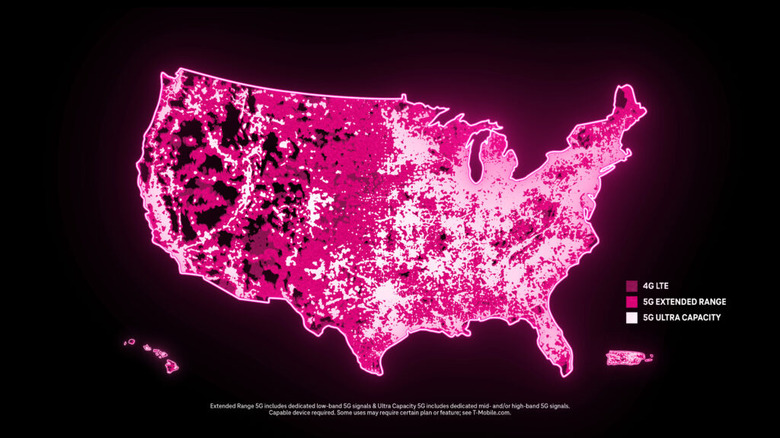T-Mobile Claims That Its 5G Service Now Covers Over 300 Million Americans
We are officially in the 5G era... right?
I remember when 5G was all the hype. It was going to change the world. Doctors would be performing robot surgeries from another country. People would be streaming AAA video games to their cell phones instead of buying a console. Wi-Fi? That's so old school. 5G was going to replace that, too.
Well, a few years into the 5G revolution, and not all of these things have come to pass. We're definitely not replacing gaming consoles anytime soon. Doctors are also not operating on patients from different countries using cellular service (the mere thought of that still terrifies me, so I'm personally thankful this one hasn't come to pass yet).
However, we have seen a lot of progress in certain areas. There are a small number of people who have actually started using 5G as their home internet. T-Mobile is one of the cellular carriers offering such a service, and today, the company announced that it has reached its goal of covering over 300 million Americans in 5G.
According to the press release, the company's Ultra Capacity 5G service now covers 330 million people across the country — what T-Mobile says is 98% of the population. The company says it has reached this goal months ahead of schedule — the plan was to do this by the end of 2023. Ulf Ewaldsson, President of Technology at T-Mobile, claimed in a statement that other carriers are still "playing catch-up."
"We have been leaders in the 5G era from the start, deploying the largest, fastest, most awarded and most advanced 5G network in the country faster than anyone else. While the other guys are playing catch-up, finally beginning to build out their mid-band 5G networks, we are maintaining our lead and will continue offering customers the best network – paired with the best value – for years to come".
T-Mobile's 5G coverage doesn't mean that everyone is getting the fastest 5 speeds. While the company has deployed mmWave in some metropolitan areas, most of the 5G coverage comes from its mid-band towers, which, while still being faster than 4G LTE, aren't as big of a jump as mmWave. Of course, mmWave won't be deployed everywhere anyway due to the fact that — while it is really fast — it cannot reach far.
My personal experience with T-Mobile's 5G has been generally great. The only time that I still run into issues is when I'm out hiking in certain areas — hardly surprising. Hopefully, with the company bringing on Starlink as a partner for satellite service next year, even those spotty areas will improve over time.
